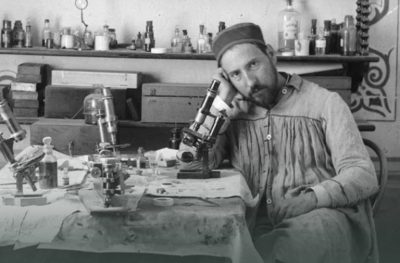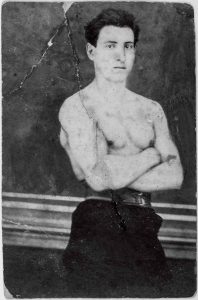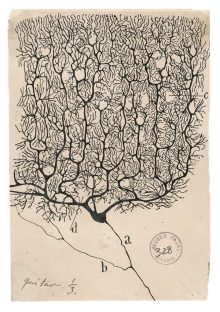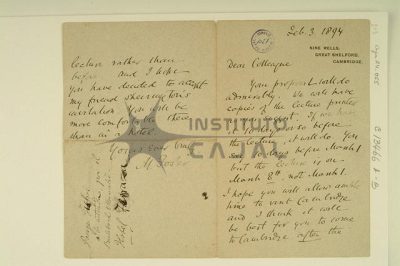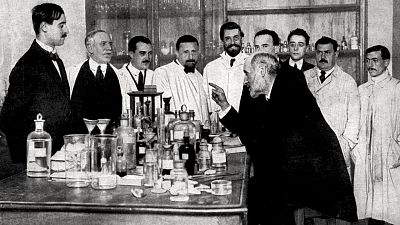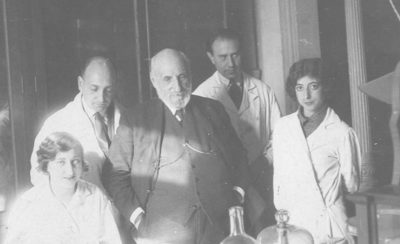The art and legacy of Santiago Ramón y Cajal
An SRUK/CERU Exhibition
The Neuroscience Committee from the Society of Spanish Researchers in the United Kingdom (SRUK/CERU) is bringing for the first time a travelling exhibition to the United Kingdom between March and September 2025 to commemorate the “Year of Research Ramón y Cajal”. The exhibition brings the figure of Santiago Ramón y Cajal and his legacy closer to the public in the UK. The exhibition would provide a fascinating insight into the life and work of the “father of modern neuroscience”, showcasing his transformative contributions to the field.

The exhibition uses the figure of Cajal as the main character driving the exposition. Divided in different sections, the exhibition will talk about a variety of topics:
This exhibition will be travelling around the UK and the Neuroscience Committee is organizing inaugural events in each of the venues to highlight different aspects of Santiago Ramón y Cajal figure.
-
-
- The inaugural event in London will feature Professor Oscar Marín from King’s College London, Professor Rosario Moratalla, current director of Instituto Cajal in Madrid, Dr Fernando de Castro from Instituto Cajal (Madrid, Spain), Professor Steve Gentleman (Imperial College London) and Dr. Ana Costa Pereira, Director of Centre for Languages, Culture & Communication Centre for Languages of Imperial College London (UK). The session will focus on Cajal’s life and his influence in modern Neuroscience.
- At the Instituto Cervantes in Manchester, we’ll explore the role of Cajal as a mentor, explaining the importance of the Spanish Neurological School. This will be a great opportunity to learn not only about the well-known male disciples of Cajal, but also to learn about the presence -not so well known- of women in his school and their contributions to the field.
- In Bristol, this itinerary exhibition will be part of the international symposium in neuroscience Cerebellum and Emotional Networks (CEN) celebrated from the 4th to the 6th of June in the Wills Memorial Building (University of Bristol). The general public may interact with renowned international neuroscientists. Dr. Javier de Felipe, from the Instituto Cajal (Spain), will present Ramón y Cajal’s artistic skills and explain how science and art interconnect. A satellite exhibition will highlight the art-science crosstalk: how artists are inspired by nature and how scientists use arts to tackle research questions. The exhibition will then be moved to the Priory Road Complex (University of Bristol) and exhibited during the rest of June.
- York and Edinburgh activities are still under consideration.
Do not miss important days:
-
-
-
- London:
- Inaugural event: 21st of March 2025. More info and registration here.
- Venue: Imperial College Centre for Languages, Culture and Communication. Exhibition Road Level 3, Sherfield Building South Kensington Campus Imperial College, London SW7.
- Opening hours: 8am to 6pm, Monday to Friday.
- Closing: 11th of April 2025.
- Manchester:
- Inaugural event: 25th of April 2025. More info and registration here.
- Venue: Instituto Cervantes de Manchester, 326-330 Deansgate, M3 4FN.
- Opening hours: 9 am to 6pm Monday to Thursday and 9 am to 2.30 pm on Fridays.
- Closing: 28th of May 2025.
- Bristol:
- Inaugural event: 6th of June 2025.
- Venue: Wills Memorial Building, Queens Rd, BS8 1RJ, Bristol.
- Opening hours: 8am to 6pm, Monday to Friday.
- Closing: 27th of June 2025.
- York: TBD
- Edinburg: TBD
There are a limited number of microgrants available to partly cover the transport expenses of SRUK/CERU members willing to attend the exhibition inaugural events. More information about these can be found in the on our SRUK/CERU Members Zone.
- London:
-
-
-
Interactive Resources
Introduction, origin of Cajal’s legacy, and UNESCO heritage
Cajal’s legacy, with over 28,000 items, has been part of the UNESCO World Heritage since 2017. The first two parts of the exhibition will introduce visitors to Cajal’s legacy, personal life and family, as well as his passion for art and photography.
Who was Cajal? Life, family and career
Cajal was born in Spain in 1852 in Petilla de Aragón, Navarra, a very small village in a family that always pushed him to get a good education and become a medical doctor like his father. Over several years at the university, he drew a large variety of anatomical systems and organs. Cajal was also a bodybuilder and photographer, this last helped him to develop new photographic revelations.
Cajal’s scientific work and its impact
The exhibition continues with his scientific work, represented in a large variety of different drawings and scientific preparations that explain three of his main scientific contributions: the neuronal theory, the theory of dynamic polarization, and the discovery of neuronal dendritic spines. The drawings demonstrate that, without any modern scientific technology, only with his histological preparations and his microscope, his ideas were ahead of his time.
Cajal’s link with the UK
The next part focuses on Ramón y Cajal links with the UK. Sir Charles Scott Sherrington invited Cajal to the UK. In London, he participated as a speaker at the Croonian Lectures organized by the Royal Society. He was also elected as a Foreign Member of the Royal Society in 1909. He also visited Cambridge and Oxford. In this section of the exhibition we highlight the importance of international collaborations, international meetings and governments cooperation.
Cajal as a mentor and his research school
Cajal is also well known for his role as a mentor. He started the “Spanish Neurological School” commonly known as Cajal’s School, where researchers were formed and advanced the knowledge about the human body and brain connections. Here we introduce some of his pupils and how their work contributed to science.
The Nobel Prize
Finally, in collaboration with the Camillo Golgi Museum in Italy, the final part of the exhibition explains not only the difference between Cajal’s and Golgi’s theories but also their drawings and methods. Both of them received the Nobel Prize in Medicine in 1906, however, the relationship was tense and just few interactions were registered between them.
Acknowledgements
SRUK/CERU Neuroscience Committee
Sponsors

Collaborators


